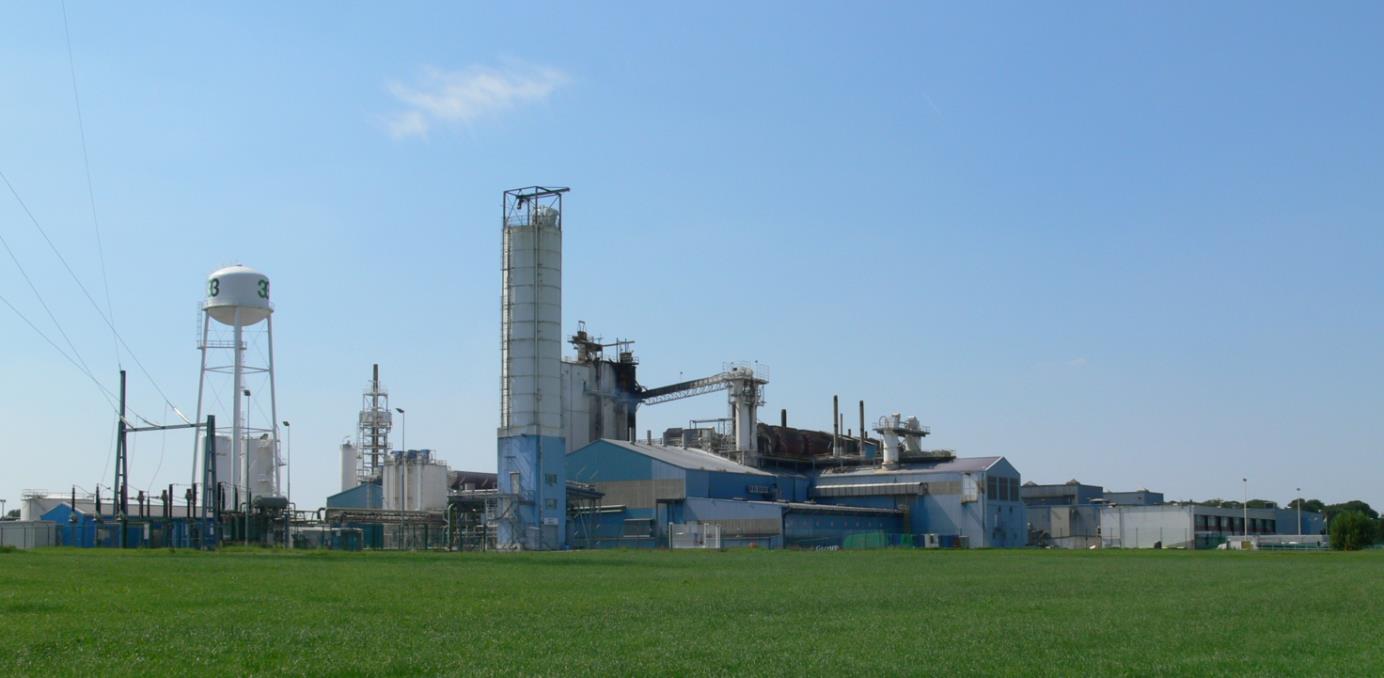1966 – 2016 : 3B’s Battice plant is present since 50 years
3B Fibreglass is an industrial company that manufactures glass fibre for various applications, mainly the reinforcement of composite materials used in the automotive and wind industries. 3B has 3 production sites, located in Battice (Belgium), Birkeland (Norway) and Goa (India). It employs a thousand people around the world.
The Battice site started operation in 1966. At the time, it was an American company that wanted to have a production unit in Europe and that built the factory and research centre of Battice, dedicated to glass fibre production and serving all of Europe. At start-up, the Battice site had no fewer than 300 people for a surface of about sq.m. 40,000.
“At the time, the ‘Pays de Herve’ was chosen because the region was known for its textile industry, for the know-how of its population and for its location in the heart of Europe, close to major chemical industries", explains Pierre-David Petitjean, director of the Battice plant.
In 2008, the US shareholder acquired its main competitor and was in a dominant position on the European market. At the request of the European Commission, its two European reference facilities had to be ceded, namely the plants of Battice (Belgium) and Birkeland (Norway). In 2008, as a consequence, 3B-the fibreglass company was born: the new company was named 3B-the fibreglass company, taking the initial letter of each of its three locations, Battice, Birkeland and Brussels where the group has a customer service centre. 3B continues its activities in the field of glass fibre, focusing on the development and supply of glass fibre products and technologies for the reinforcement of thermoplastic and thermoset polymers.
In 2012, the Indian group Braj Binani, active in the cement, zinc and glass sectors, acquires 3B-the fibreglass company. This operation aims to create a major industrial player, implementing cutting-edge technologies. In doing so, the Binani Group has confirmed the strategy pursued by 3B since 2008 and has integrated its Goa fibreglass plant at 3B.
"Today, our plant is 50 years old. As proud as I am of the teams that make it work every day, this anniversary also shows our ability, over time, to meet many organizational and technical challenges and to be the best European glass fibre manufacturing plant for automotive and wind in Europe today", continues Pierre-David Petitjean.
"The ingredients for this success story are the same as in the past: open, competent and committed staff who give the best of themselves at work, high quality products made with the utmost care, technologies that respect the environment, a strong and close relationship with our customers and a constant attention to safety. This Saturday, October 22, it is our staff that we want to put in the spotlight: thanks to these generations of workers who have been with us that we can consider the future with the same ambition and the same passion as at the creation of the plant. " 2 | P a g e
Some key facts about glass fibre
The manufacturing process
Glass is made from a mixture of minerals that are injected into furnaces from silos. These furnaces are heated to a temperature of 1600° thanks to oxygen and gas burners as well as electrical energy. The mineral materials transported in the furnaces are brewed and melt. At the outlet of the furnace, the glass then follows channels that lead to the bushings. These are pierced with holes of very small size. The glass is drawn through these holes: the molten glass is transformed into filaments, or glass fibre. A chemical coating gives the product its specific mechanical properties, which are necessary for its different applications. The glass fibre produced in Battice is sold in various forms:
- cut filaments,
- wound filaments,
- mat.
The Battice plant has 3 furnaces, which operate continuously: the workers work in continuous fire over 3 shifts.
The properties of glass fibre
- Glass is very flexible and has a high tensile strength.
- Glass does not burn and is non-conductive.
- Glass is very resistant to the action of most acids as well as water.
- Glass is 3 times less dense than steel. Its weight-resistance ratio is therefore very interesting for the manufacture of increasingly light parts in a constant perspective of limiting manufacturing costs, for example in the automotive industry.
The glass fibre industry and the environment
The glass fibre industry has a high consumption in terms of energy and raw materials. Nevertheless, the life cycle of the products made with glass fibre testifies to its durability. 3B-the fibreglass company is committed to minimizing its raw material consumption and CO2 emissions, producing boron-free glass and ensuring the upcycling of its glass waste.
Some figures about the Battice plant
- The Battice plant is one of the 3 sites of 3B-the fibreglass company. It employs more than 400 people. 3B's head office is also located in Battice, rue de Charneux, and is home to the company's research centre: 76 people work there.
- With the Birkeland plant (Norway) and the Goa plant (India), 3B - the fibreglass company employs nearly 1,000 people in Belgium, Norway and India.
- The production volume in Battice reaches more than 100,000 tons of glass fibre.
